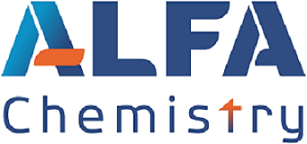| Alfa Chemistry | |
|---|---|
| Country: | United States |
| Tel: | 5166625404 |
| E-mail: | support@alfa-chemistry.com |
| QQ: | |
| Skype: | Chat Now! |
Guard Catalysts
Release time: 2024-02-18
Although catalyst deactivation is inevitable for most processes, how to avoid some direct catalyst premature deactivation as much as possible is of great significance. Catalyst poisoning is an important cause of premature catalyst deactivation. If the feedstock contains impurities such as nickel, vanadium, iron, silicon, arsenic, phosphorus and sodium, even at ppb or even ppm levels in the feedstock, it can have devastating effects on downstream catalysts.
Catalyst Poisoning Mechanism
- Poisoning is the strong chemisorption of reactants, products, or impurities on other sites that could be used for catalysis, thereby blocking the site of the catalyzed reaction.
- Taking sulfur poisoning during ethylene hydrogenation as an example, Figure 1 presents a conceptual 2D model of sulfur poisoning on metal surfaces. Strongly adsorbed pairs of sulfur atoms may have multiple effects on metal catalyst performance, including blocking reaction sites, changing neighboring metal atoms, causing surface remodeling, slowing surface diffusion of adsorbed reactants, etc., ultimately leading to premature catalyst deactivation.
 Figure 1. Conceptual model of sulfur atom poisoning on metal surfaces [1]
Figure 1. Conceptual model of sulfur atom poisoning on metal surfaces [1]
Applications
Traps or "getters" are one strategy used to reduce the effects of poisoning, especially sulfur. The researchers investigated the effect of Ce and Yb on the sulfur and water tolerance of Pt/KL aromatization catalysts. The results showed that the addition of Ce and a small amount of Yb significantly suppressed catalyst deactivation in the presence of sulfur. Furthermore, the Ce-promoted Pt/KL catalyst exhibited higher resistance to metal agglomeration and lower coke formation rate.
 Figure 2. n-Hexane conversion (a) and benzene selectivity (b) vs. time on stream under 2.5 ppm sulfur-containing feed. [2]
Figure 2. n-Hexane conversion (a) and benzene selectivity (b) vs. time on stream under 2.5 ppm sulfur-containing feed. [2]
References
- Morris D. Argyle. (2015). "Heterogeneous Catalyst Deactivation and Regeneration: A Review," Catalysts 5: 145-269.
- Siriporn Jongpatiwut. (2002). "Sulfur- and water-tolerance of Pt/KL aromatization catalysts promoted with Ce and Yb," Applied Catalysis A: General 230(1-2): 177-193.

